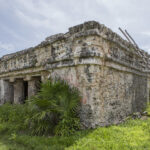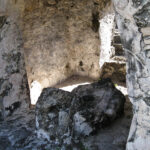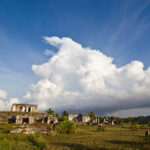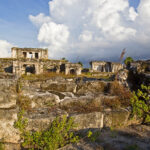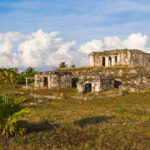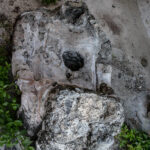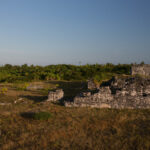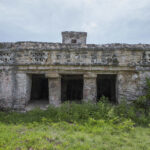The Sian Ka’an Biosphere Reserve contains 22 registered archaeological sites. The Maya archaeological sites of Tupak and Chac Mool located within the Punta Pájaros Reserve provide evidence of the presence of human occupation from 900 to 1200 A.C. During this period, Chac Mool was used to support commercial marine trade by providing security and supplies to the boats that plied the waters from the Gulf of Mexico to Central America. The site was continually occupied until 1521, when the Spanish arrived on the scene.
However, due to the inability of the Spaniards to conquer the region from the east, the coast was pretty much left alone by the Spanish during the 17th and 18th centuries. The forests of the region, in the meantime, became a refuge area for ‘pagan’ Maya fleeing from the Spanish, who successfully colonized the peninsula upon entering it from the west, in what is today the state of Campeche.
Pirating activities by the French and English against the Spanish further reduced colonization efforts along the entire east coast, although some colonial period artifacts were found at Chac Mool. The Caste War of Yucatan that erupted in 1847, which pitted the Indians against the Mestizos caused the area to become a no-man’s land controlled by the defiant Chan Santa Cruz Indians.
It was only in the 20th century that the rebellious territory attracted the interest of the Mexican Government. They had their eyes on extracting chicle, (the resin used in making natural chewing gum) logwood and copra from the region.
Upon temporarily subduing Chan Santa Cruz, (today’s Felipe Carrillo Puerto), they established small ports and garrisons in strategic locations, including Vigia Chico on the backside of Ascension Bay. After the door was opened to the chicle and logwood business, the copra industry took hold. The Chac Mool site served as a copra camp between 1940 and 1950.
For more about the Chac Mool and Tupac Ruins, see our ruins pdf here:


